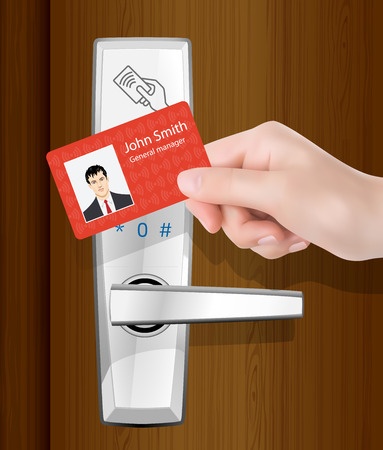How confident are you in the quality and the reliability of your company’s security system? The good news is that you have many options to choose among. They’re so diversified that picking the right one may even be a bit confusing in the beginning.
Proximity cards add a lot of convenience due to their contactless nature. Figuring out whether they’re the right option for your organization is all about taking several factors in consideration.
 What is a Proximity Card?
What is a Proximity Card?
Let’s focus on the essentials first. This type of access control card holds information about its owner and grants or denies access to certain premises on the basis of this information.
This means that such security cards can be used to grant employees different levels of access to company facilities. They’re perfect for restricted premises and specialized/high security areas.
There are many different types of proximity cards to choose among. Generic badges are cheap and quick to make. These are perfect for giving all employees access to a building or an office. There are also ISO-compliant access options, cards that offer limitless customization and heavy-duty options.
The Most Important Benefits of Proximity Cards
Before figuring out whether this product is the next logical step in your company’s security plan, it’s important to understand its most important benefits.
Companies that feature different buildings or offices will require highly specific authorization options for different groups of employees. A proximity card makes the process very simple because it can be personalized. Otherwise, the company will have to come up with a rather complex and expensive integrative security system.
Such cards can be programmed to be compatible with different kinds of readers. Thus, they can easily be added to an existing security framework.
Currently, electronic card access is considered one of the most secure options for corporate, governmental and administrative buildings. Pre-programming makes cards functional during a certain period of time, after which the building is completely locked down. There are limitless ways in which security can be customized and enhanced. Proximity cards are starting to replace traditional locks and the effectiveness is unparalleled.
The use of electronic cards is also great for companies that see frequent employee changes. Once a person leaves the organization, their credentials are simply erased from the database. There’s no need to ask for keys or have the respective office/building re-keyed.
The Proximity Card = More Effective Security Management
The use of electronic cards that feature employee ID information is wonderful for keeping control over access and getting some additional information about attendance. Data from card use is recorded in the main database, giving organizations tons of useful information. Such information can play a vital role in human resource management.
The security benefits stemming from the use of such security systems don’t need to be described any further.
Companies interested in modernizing and customizing their access systems should definitely consider the option. Getting such cards and readers in place will require a single investment. Once the initial items are purchased, the system will allow for limitless customization at a minimal cost.
The use of a proximity card for every employee makes it extremely difficult for unauthorized individuals to enter a building or an office. Thus, larger companies that have a big number of workers or visitors should definitely consider the possibility. While proximity cards may not be an ideal option for smaller entities, such companies will also experience benefits from the introduction of such an innovative and customizable security measure.
Looking to learn more? Contact us today!
